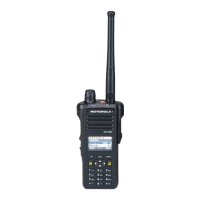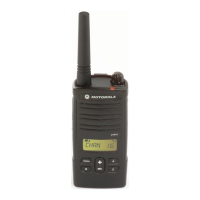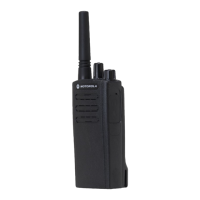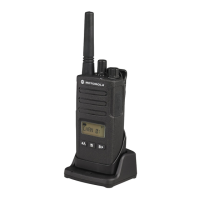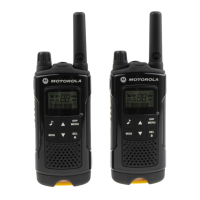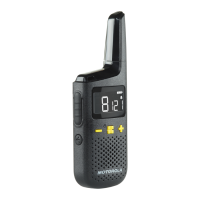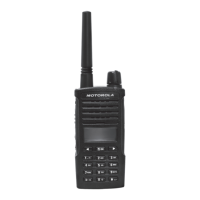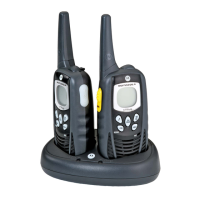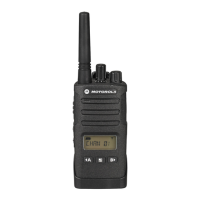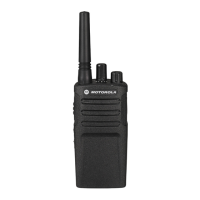February 14, 2012 6816985H01-F
2.5-2 900MHz Overall Characteristics: Analog Mode of Operation-Transmitting
In the VOCON circuitry, the DSP decodes the information in the signal and identifies the appropriate
destination for it. For a voice signal, the DSP will route the digital voice data to the CODEC for
conversion to an analog signal. The CODEC will then present the signal to the audio power amplifier,
which drives the speaker. For signaling information, the DSP will decode the message and pass it to
the microcontroller unit.
2.5.3 Analog Mode of Operation-Transmitting
When the radio is transmitting, microphone audio is passed through gain stages to the CODEC,
where the signal is digitized. The CODEC passes digital data to the DSP, where pre-emphasis and
low-pass (splatter) filtering is done. The DSP returns this signal to a digital-to-analog converter (D/A),
where it is reconverted into an analog signal and scaled for application to the voltage-controlled
oscillator as a modulation signal.
Transmitted signaling information is accepted by the DSP from the microcontroller unit, coded
appropriately, and passed to the D/A, which handles it the same as a voice signal. Modulation
information is passed to the synthesizer along the modulation line. A modulated carrier is provided to
the RF PA, which transmits the signal under dynamic power control.
2.5.4 ASTRO Mode (Digital Mode) of Operation
In the ASTRO mode (digital mode) of operation, the transmitted or received signal is limited to a
discrete set of deviation levels, instead of varying continuously. The receiver handles an
ASTRO-mode signal identically to an analog-mode signal up to the point where the DSP decodes
the received data. In the ASTRO receive mode, the DSP uses a specifically defined algorithm to
recover information.
In the ASTRO transmit mode, microphone audio is processed identically to an analog mode, with the
exception of the algorithm the DSP uses to encode the information. This algorithm will result in
deviation levels that are limited to discrete levels.
2.5.5 Main Board Overview
The receiver front end consists of two wide-band varactor-tunable filters:
1. a wide-band, low-noise amplifier, and
2. an active mixer stage.
The receive path of the antenna switch feeds directly into a preselector filter, followed by a Low
Noise Amplifier (LNA) and a post-selector filter, then the mixer. Both filters are supplied with a single
control voltage from one of the Power Control IC DACs (Digital-to-Analog Converters). The output of
the post-selector filter is sent to the active mixer stage.
The frequency generation function is performed by three ICs and associated circuitry. The reference
oscillator provides a frequency standard to the synthesizer/prescaler IC, which controls the
Voltage-Controlled Oscillator Buffer (VCOB) IC. The synthesizer/prescaler circuit module
incorporates frequency-division and comparison circuitry to keep the VCO signals stable. The
synthesizer/prescaler IC is controlled by the microcontroller unit through a serial bus.
The receiver back end consists of a single, three-pole crystal filter and the digital back-end IC
(ABACUS-III). Final IF filtering is done digitally in the DSP.

